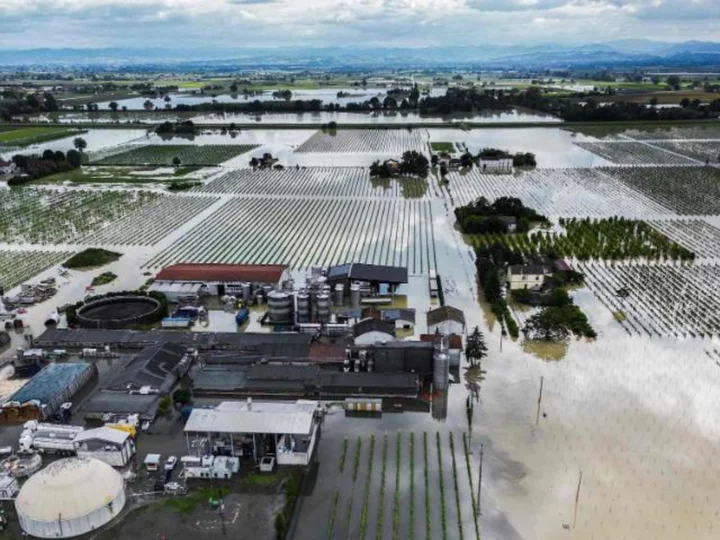When the rain started falling in the north Italian region of Emilia Romagna last week -- one of the premier gastronomic destinations in a country famous for its food -- farmer Andrea Betti feared the worst.
In early May, six months of rain fell over a two-week span, breaking the years-long drought, but not in the way they wanted. Then, another six months' worth of rain fell -- this time in 36 hours.
"The ground was dry due to the drought, cracks had formed and, as we know, dry ground becomes impermeable," said Betti, who is also vice president of farming organization the Confagricoltura Ravenna. "The water then slides away, destroying everything."
What also slid away were orchards, vineyards and crops ready to harvest. Thousands of farms are still underwater, countless livestock have perished or risk starving to death. Videos showed pigs swimming in floodwater. And the rain continues.
The Confagricoltura puts the damage price tag at €6,000 ($6,500) per hectare for arable crops like wheat, barley, corn, soybean, sunflowers, alfalfa and other seed crops.
The cost for fruit orchards, vineyards and olive groves is more than five times higher, at €32,000 per hectare.
The group says 40 municipalities with such crops are submerged. If the water seeps away, the crops left standing might survive. But the longer the water remains stagnant, the greater the risk for root rot, which means those crops will have to be replanted.
Coldiretti, the country's national federation of farmers, said in a statement that the damage is "incalculable" with the most affected sector being that of fruit and vegetables.
"The slow outflow of the water left in the orchards 'suffocates' the roots of the trees until they rot and the risk of ruining entire plantations that will take years before becoming productive again," the group said
Crops already harvested are also at risk. "In some cases the water has also entered the warehouses and the wet grain will no longer be viable with huge economic damage," Massimo Masetti, director of the Agricultural Consortium of Ravenna warned in a radio interview.
Emilia Romagna is one of the richest regions in Italy. The region produces 9.1 percent of the country's GDP. Employment is 68 percent, almost three times higher than the south of the country.
The area is known as "food valley" and boasts 19 museums celebrating regional cuisine and products including Parmigano cheese, Parma ham, balsamic vinegar, and other delicacies the area is known for.
There are more Michelin-starred restaurants per capita in this region than any other in Italy. Gastronomic tours bring millions of people to the area each year.
It was, in other words, one of the most livable places in the country -- until now.
When a devastating earthquake struck north of the flood area in 2012, the damage to the country's "made in Italy" heartland, the damage reached more than 13 billion euro.
This flood could triple that, according to Coldiretti, but the true cost won't be tallied until the water recedes. Coldiretti fears thousands of livestock have drowned.
The agriculture organizations say there are currently more than 5,000 farms with greenhouses/nurseries, stables, barns "submerged" but they have not even begun to inspect farms and communities still cut off by landslides.
Those hilltop towns won't have suffered flood damage, but after days without food, water and electricity, they are beginning to get reports of dire situations.
Extreme weather such as what has happened this month in Emilia Romagna is perplexing even to experts. Luca Mercalli, president of the Italian Meteorological Society, told reporters at the scene that there is no way to foresee such disasters.
"The only new thing to say about the latest floods is that two records were broken in 15 days in the same region. An event like the one that occurred on May 2 might happen once in a century, but then another hit 15 days later -- having two occasions of intense rain within such a short timeframe, and in the same region, is what is really surprising."









